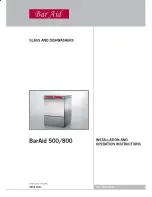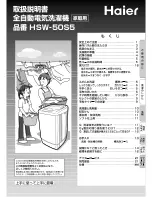
14
P0004
P1018
M0042
60
P1019
Operating sequence
Before washing your first load of laundry, we
recommend that you run a cotton cycle at 60°C,
with the machine empty, in order to remove any
manufacturing residue from the drum and tub.
Pour half a measure of detergent into the main
wash compartment and start up the machine.
1. Place the laundry in the drum
Open the door.
Place the laundry in the drum, one item at a
time, shaking them out as much as possible.
Close the door.
2. Measure out the detergent
Pull out the dispenser drawer until it stops.
Measure out the amount of detergent
recommended by the manufacturer in a
graduated cup and pour it into the main wash
compartment
. If you wish to carry out a
prewash, pour detergent into the appropriate
compartment marked
.
3. Measure out the additive
If required, pour fabric softener into the
compartment marked
without exceeding the
«MAX» mark.
4. Select the desired option
Depress SPIN-SUPPRESSION
and/or HALF
LOAD
and/or INTENSIVE RINSE
button,
if required.
5. Select the temperature
Turn the selector dial to the required
temperature setting.
Summary of Contents for EW402F
Page 1: ...WASHING MACHINE INSTRUCTION BOOKLET EW 402 F 124 972 570 GB ...
Page 20: ......






































